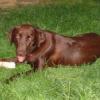I was reading a paper recently and thought that I would post a formula that helps you convert dosages given in animal studies into a human equivalent dosage
FASEB J. 2007 Oct 17; [Epub ahead of print]
Dose translation from animal to human studies revisited.
Reagan-Shaw S, Nihal M, Ahmad N.
*Department of Dermatology,Paul P. Carbone Comprehensive Cancer Center;Molecular and Environmental Toxicology Center, University of Wisconsin, Madison, Wisconsin, USA.
As new drugs are developed, it is essential to appropriately translate the drug dosage from one animal species to another. A misunderstanding appears to exist regarding the appropriate method for allometric dose translations, especially when starting new animal or clinical studies. The need for education regarding appropriate translation is evident from the media response regarding some recent studies where authors have shown that resveratrol, a compound found in grapes and red wine, improves the health and life span of mice. Immediately after the online publication of these papers, the scientific community and popular press voiced concerns regarding the relevance of the dose of resveratrol used by the authors. The animal dose should not be extrapolated to a human equivalent dose (HED) by a simple conversion based on body weight, as was reported. For the more appropriate conversion of drug doses from animal studies to human studies, we suggest using the body surface area (BSA) normalization method. BSA correlates well across several mammalian species with several parameters of biology, including oxygen utilization, caloric expenditure, basal metabolism, blood volume, circulating plasma proteins, and renal function. We advocate the use of BSA as a factor when converting a dose for translation from animals to humans, especially for phase I and phase II clinical trials.-Reagan-Shaw, S., Nihal, M., Ahmad, N. Dose translation from animal to human studies revisited.
PMID: 17942826 [PubMed - as supplied by publisher]
The formula
Human Equivalent Dose (mg/kg) = Animal dose (mg/kg) multiplied by Animal Km / Human Km
Where
Species and Km values based on body surface area
Adult Human 37 (60kg)
Child Human 25
Baboon 20
Dog 20
Monkey 12
Rabbit 12
Guinea Pig 8
Rat 6
Hamster 5
Mouse 3
The above paper gives an example of converting a dose of resveratrol (22.4 mg/kg) given to a mouse into the Huma Equivant dosage based on body surface area
To convert into HED
the formula again
Human Equivalent Dose (mg/kg) = Animal dose (mg/kg) multiplied by Animal Km / Human Km
Plugging in values
HED = 22.4 (mg/kg) x 3 (mouse Km) / 37 (Human Km)
The HED = 1.82 mg/kg
If you weighed 70kg then your equivalent dose would be 127.4mg


















































